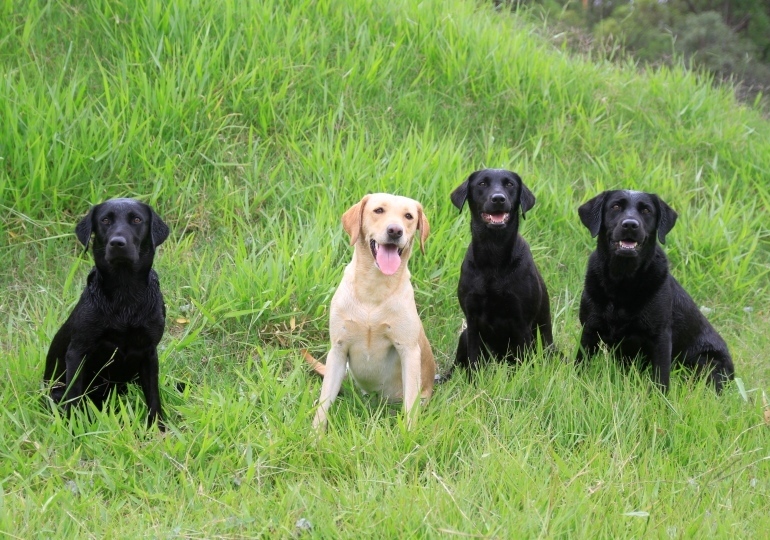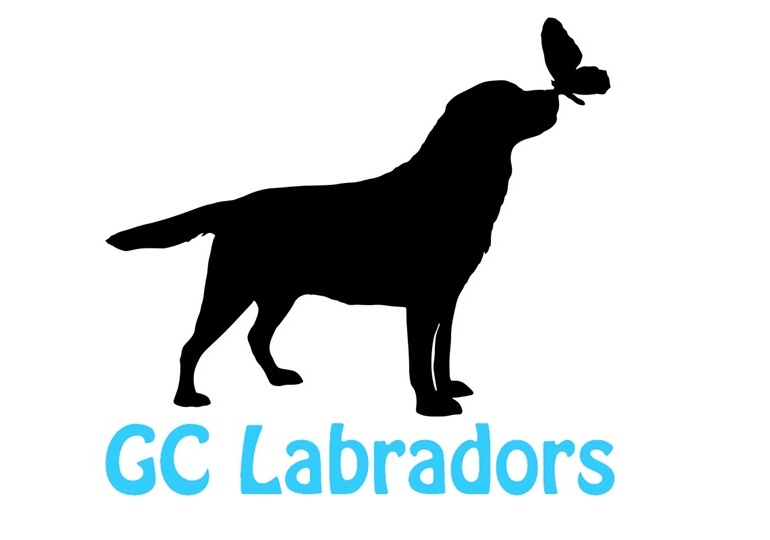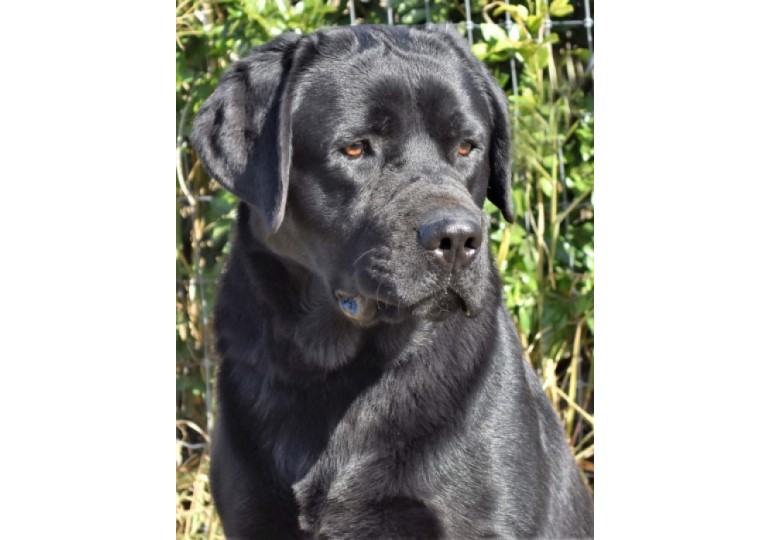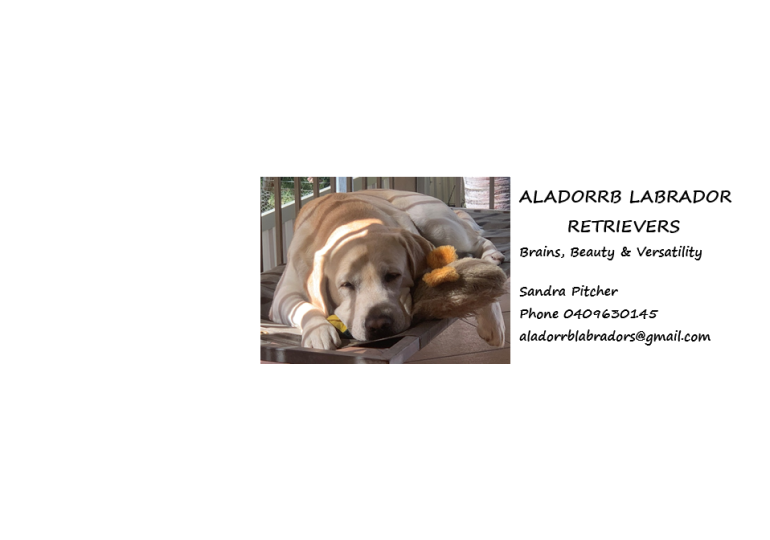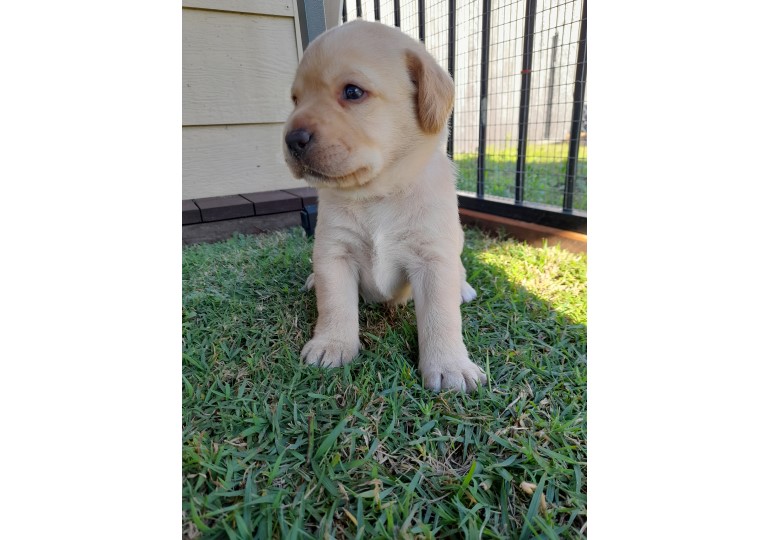
GROUP 3 - GUNDOGS
There are a number of theories regarding the origin of the Labrador. The most popular belief is that it was developed in Newfoundland, probably with fishermen who worked the rich fisheries off the coast of the eastern Canadian provinces. There, in order to avoid confusion with the larger, heavy-coated Newfoundland dog, it was called the ‘Lesser Newfoundland’ or ‘St Johns Dog’, before being renamed the ‘Labrador Retriever’.
The original Labrador was a versatile working dog, able to rescue drifting nets, bring back shot waterfowl, and haul the catch to market in jog carts. It made its way to England when the fishing boats called to land their catch. There, its retrieving ability and marvellous nose brought it to the attention of the sporting gentry who developed it as a gundog. The Labrador Retriever was first recognised by the UK Kennel Club in 1903.
In The History of the Labrador in Australia, Mary Dalgarno records that the first known imports into Australia were to Mr R A Austin of Mortlake, Victoria in 1929. For many years the Labrador has had the highest annual registrations in Australia and around the world. Their versatility has made them suitable for work as guide dogs for the visually impaired and assistance dogs for people with disabilities.
Labradors also work with customs and police as tracking and drug detector dogs and with the military as bomb-detector dogs. It is an outstanding dog for events such as Retrieving Trials, Obedience, Tracking and Agility.
The breed standard takes only a few words to describe the Labrador but they are very telling. Good tempered and very agile, with an excellent nose, soft mouth and keen love of water, the Labrador is an adaptable, devoted companion.
Well-bred Labradors have a stable temperament. In this one breed are combined a smattering of all the attributes needed in a family dog. It is loyal and patient with children and adults, always craving the companionship of its family.
It is intelligent and easily trained, has a loud voice to warn of approaching strangers, but should be neither aggressive without provocation or unduly shy. The Labrador loves to learn, whether formal obedience work or just tricks.
The Labrador is one of the most recognisable dogs in the world. It is strongly built, short coupled and very active. Labradors come in three colours, wholly black, yellow (ranging from light cream to red fox) or liver/chocolate. A small white spot on the chest is permissible in all colours.
In some parts of the world ‘silver’ is promoted as a Labrador colour, but it is not recognised for registration in Australia.
Labradors are robust dogs, with an average lifespan of approximately 12–16 years. Along with a number of breeds, they have the potential to develop hip and elbow dysplasia, and eye problems. Reputable breeders have worked hard over the years to reduce the risk to a minimum.
Labrador breeders registered with an ANKC affiliated body cannot register a litter of puppies unless the parents have been radiographed and assessed for hip and elbow dysplasia.
All breeding stock should also have Eye Clearance Certificates. Responsible breeders use all available screening programs to ensure that their breeding stock is sound.
Buyers should ensure they buy only from registered breeders who are members of DOGS NSW, as these breeders are obliged to work to improve the health of the breed.
Labradors have a healthy appetite and their diet must be regulated to prevent them becoming overweight. The diet should be complete and balanced. As an active dog, the Labrador requires regular exercise; at least 30 minutes’ walking or equivalent per day is sufficient.
With its dense, weather-resistant coat, a Labrador on a well-balanced diet really only needs two or three good brushings per week to keep it looking smart. When it is moulting a daily brush is advised. Too much washing, especially with shampoos, will remove the natural oils from the coat.
Words: Hugh Gent OAM on behalf of the Labrador Retriever Club of NSW Inc
Image: Cabal Canine Candids
Now you know a little about the Labrador Retriever, you may think that this is the dog for you. Before you make a decision, please make contact with the breed club or your State controlling body for purebred dogs. They will be able to give you information about available puppies and also suggest dog shows where you can see the breed and speak to breeders. In this way you will gain a better perspective of the Labrador Retriever and its needs, and whether this breed would suit your lifestyle.

